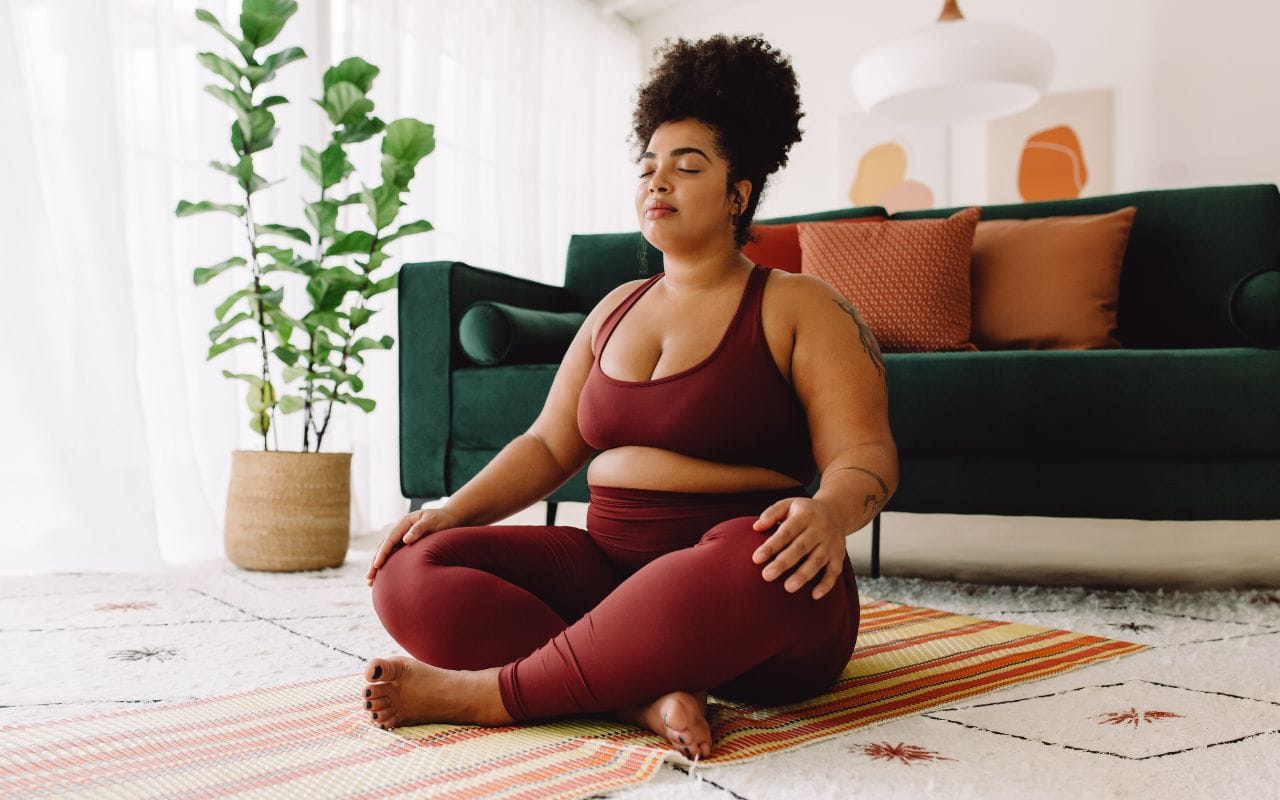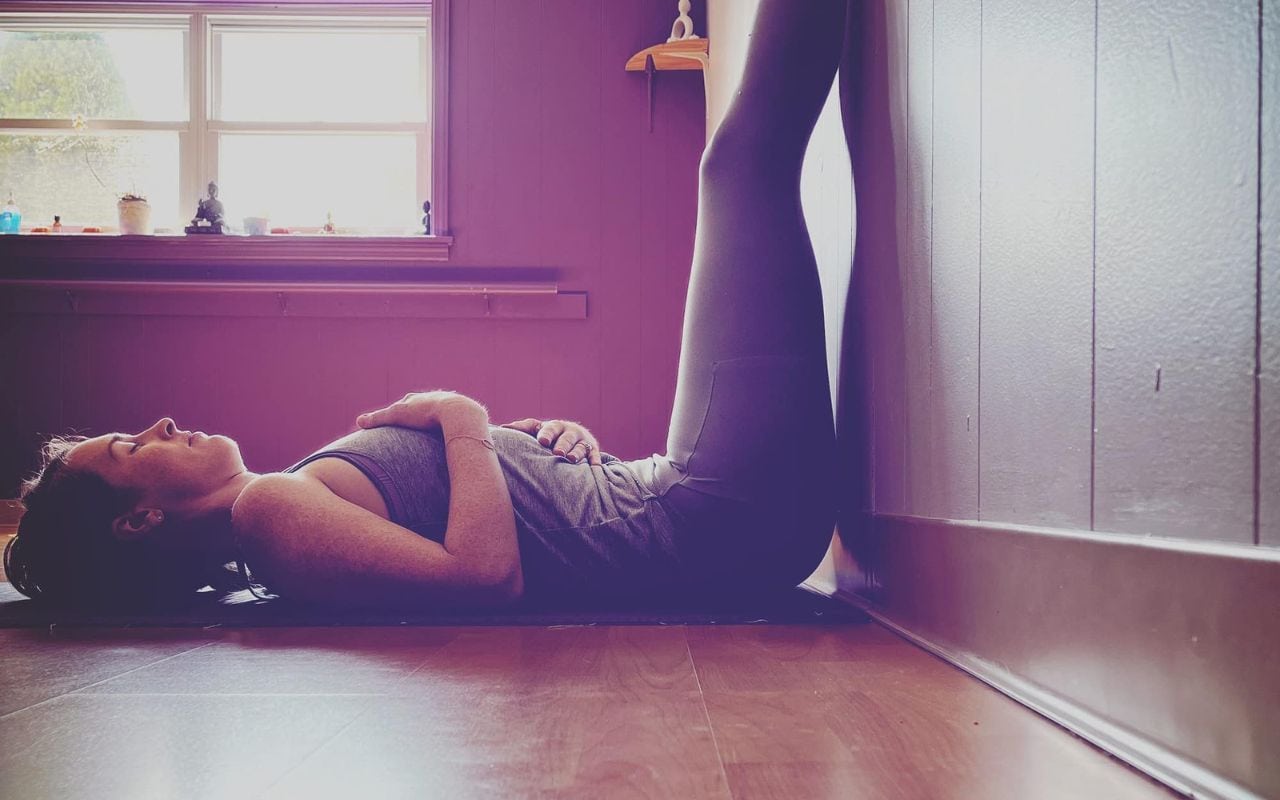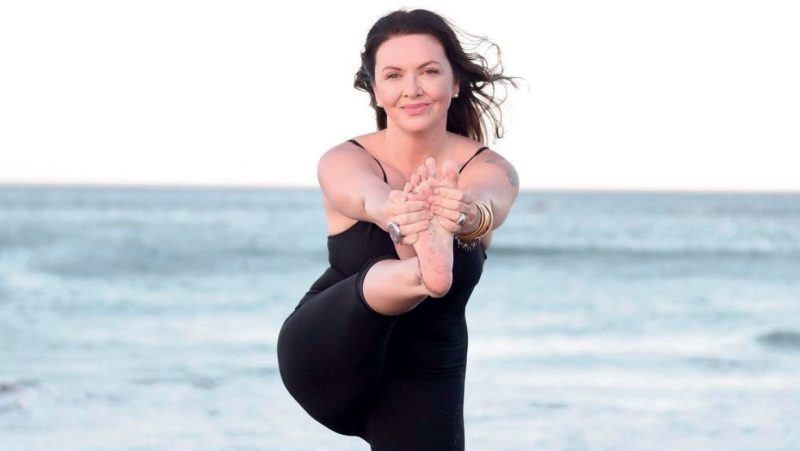Knowing myself now, it's hard to believe that I first tried yoga because I hated my body. At the time I was in my late twenties, finishing graduate school, and running long distances in my spare time. I rolled out my mat with the hope of avoiding an injury that could stop me from running and sweating off calories. As a bonus, maybe I'd end up with a slimmer waistline and a yoga butt. I'm not ashamed that vanity and insecurity brought me to yoga. It makes sense given the societal physical appearance pressures on women and the marketing of yoga as physical fitness. Thirteen years later, I now roll out my mat because of the deep love I have for my body.
I know from my own experiences that yoga can be a tool for healthy body image, but it's complicated. It's understandably confusing when yoga philosophy guides us toward self-love and acceptance but the commercial yoga industry relies on physical appearance and fitness ideals. Yoga spaces are also sometimes ripe with both implicit and explicit ideas about how our bodies should look. I once overheard a yoga teacher chatting about their worries about 'getting a belly.' Even yoga teachers, those we look to for guidance, may struggle or body positivity may not play a large role in their own practice. While a body-positive yoga practice is possible, we must be intentional about making it a reality for ourselves.
Here are five steps to take to build a body-positive yoga practice:
- Release the 'yoga body' myth
The message from the media and fitness industry is all too often loud and clear that people who 'do yoga' have or will get a socially prescribed idealistic 'fit' body. It's more than a myth. It's a toxic, unhealthy distraction. Don't listen. All of that is to capitalize on insecurities and sell products. It has zero to do with yoga itself. All bodies can be bodies that do yoga. - Make yoga a tailored experience
We may find inspiration and guidance from others, but our practice is our own. Take what intuitively feels good, fuels self-acceptance, and fosters self-love. And intentionally releases anything that doesn't. Tailoring your experience can include choosing where to practice, the teachers, certain styles of yoga, and who you share yoga with. - Focus on how the body feels
Shifting the focus to how we feel can help us to stay in our bodies instead of observing them. Watching the body can lead to overemphasis on how the body looks, criticism, and comparison to others. Keeping the focus inward and on how the body feels is one strategy for safeguarding our body image. - Celebrate what the body can do at this moment
Working toward an aspirational pose can be motivating. But making yoga more about the process than the outcome brings the focus to the here and now. Shift the energetic focus to the small changes that organically manifest from a consistent practice. Honour and have gratitude for where the body is today. - Try meditation, mantras, mudras, breathwork, and intentions
These tools are not add-ons to the postures but integral aspects of yoga. They may help us to be fully present in our bodies, to attend to how the body feels and moves, and to energetically focus on having an embodied experience. Find what feels organic and authentic and use it liberally to create a body-positive yoga practice.









